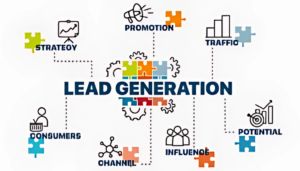
1. Introduction: Fueling Growth – The Power of B2B Lead Generation
In the competitive landscape of business-to-business (B2B) commerce,sustainable growth hinges on a consistent influx of qualified leads. B2B lead generation, the process of identifying and attracting potential business customers, is the lifeblood of any thriving B2B organization. Without a robust lead generation strategy, even the most innovative products or services will struggle to reach their target audience and achieve their full market potential.
Why Lead Generation is Crucial for B2B Businesses:
- Drives Sales Growth: Qualified leads form the pipeline for future sales, directly impacting revenue generation and business expansion.
- Builds Brand Awareness: Effective lead generation strategies increase visibility and establish your brand as a thought leader in your industry.
- Identifies Target Audiences: The process helps refine your understanding of your ideal customer profile, allowing for more targeted marketing efforts.
- Supports Long-Term Sustainability: A consistent stream of leads ensures a predictable sales cycle and long-term business viability.
- Provides Valuable Insights: Lead generation activities offer data on customer behavior, preferences, and pain points, informing product development and marketing strategies.
The Evolution of B2B Lead Generation Strategies:
The methods for generating B2B leads have undergone a significant transformation over the years. Traditional outbound tactics like cold calling and direct mail, while still having their place, are increasingly being complemented and often overshadowed by inbound strategies that focus on attracting leads through valuable content and online engagement. The digital age has ushered in a plethora of new channels and techniques, making a comprehensive and adaptable approach more critical than ever.
2. Understanding B2B Lead Generation: Laying the Foundation
Before diving into specific strategies, it’s crucial to understand the fundamental aspects of B2B lead generation.
B2B vs. B2C Lead Generation: Key Differences:
Understanding the B2B buyer’s journey is essential for tailoring your lead generation efforts effectively. This journey typically involves several stages:
- Awareness: The buyer recognizes a problem or need.
- Consideration: The buyer researches potential solutions and vendors.
- Decision: The buyer evaluates options and selects a provider.
Your lead generation strategies should align with each stage, providing relevant information and engagement opportunities to guide potential clients through the funnel.
Common Challenges in B2B Lead Generation:
- Generating High-Quality Leads: Attracting leads that are genuinely interested and fit your ideal customer profile.
- Long Sales Cycles: B2B sales often involve lengthy decision-making processes.
- Reaching Decision-Makers: Identifying and engaging the right individuals within an organization.
- Standing Out from the Competition: Differentiating your offerings in a crowded marketplace.
- Measuring ROI of Lead Generation Efforts: Tracking the effectiveness of different strategies.
3. Best B2B Lead Generation Strategies: A Holistic Approach
In today’s dynamic business environment, relying on a single lead generation tactic is rarely sufficient. The most successful B2B organizations adopt a multi-channel approach, leveraging a variety of strategies to reach their target audience at different touchpoints.
Importance of a Multi-Channel Lead Generation Approach:
- Wider Reach: Engaging potential clients on the platforms and channels they actively use.
- Increased Engagement Opportunities: Providing multiple avenues for interaction and information consumption.
- Higher Conversion Rates: Nurturing leads through various touchpoints increases familiarity and trust.
- Data Diversification: Gathering insights from different channels provides a more comprehensive understanding of lead behavior.
Key Metrics to Track for a Successful Strategy:
To ensure your lead generation efforts are effective, it’s crucial to track key performance indicators (KPIs):
- Website Traffic: The number of visitors to your website.
- Lead Conversion Rate: The percentage of website visitors who become leads.
- Cost Per Lead (CPL): The average cost of acquiring a new lead.
- Marketing Qualified Leads (MQLs): Leads that have shown sufficient interest to be passed to sales.
- Sales Qualified Leads (SQLs): Leads that sales has deemed ready for a direct sales engagement.
- Customer Acquisition Cost (CAC): The total cost of acquiring a new customer.
- Return on Investment (ROI): The profitability of your lead generation campaigns.
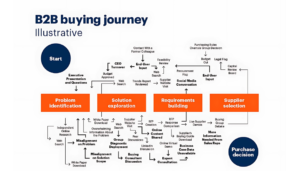
4. Inbound vs. Outbound Lead Generation: Two Sides of the Same Coin
B2B lead generation strategies can be broadly categorized into inbound and outbound approaches.
What is Inbound Lead Generation?
Inbound lead generation focuses on attracting potential customers to your business by creating valuable content and experiences tailored to their needs. This approach relies on earning the attention of prospects rather than actively seeking them out.
Key Inbound Tactics:
- Content Marketing (Blog posts, ebooks, whitepapers, webinars)
- Search Engine Optimization (SEO)
- Social Media Marketing
- Website Optimization
- Lead Magnets and Landing Pages
What is Outbound Lead Generation?
Outbound lead generation involves proactively reaching out to potential customers who may not be actively looking for your products or services. This approach requires identifying and targeting specific individuals or organizations.
Key Outbound Tactics:
- Cold Calling
- Cold Emailing
- Direct Mail
- Trade Shows and Events
- Paid Advertising (PPC, Social Media Ads)
Pros and Cons of Each Approach:
A balanced strategy often incorporates elements of both inbound and outbound to maximize lead generation effectiveness.
5. Content Marketing for B2B Lead Generation: Providing Value to Attract
Content marketing lies at the heart of many successful B2B inbound lead generation strategies. By creating and distributing valuable, relevant, and consistent content, you can attract and retain a clearly defined audience — and, ultimately, drive profitable customer action.
Creating High-Quality Blog Posts for Lead Generation:
- Focus on Solving Problems: Address the pain points and challenges of your target audience.
- Conduct Thorough Keyword Research: Optimize your content for search engines to attract organic traffic (covered in more detail in Section 6).
- Provide Actionable Insights: Offer practical tips and advice that readers can implement.
- Use Compelling Headlines: Grab attention and encourage clicks.
- Include Clear Calls to Action (CTAs): Guide readers towards the next step in the lead generation process (e.g., downloading a lead magnet, requesting a demo).
How to Use Case Studies to Attract Potential Clients:
Case studies provide social proof and demonstrate the real-world value of your products or services. They showcase how you’ve helped other businesses achieve their goals.
- Highlight Specific Results: Quantify the impact of your solutions with data and metrics.
- Tell a Story: Engage readers with a narrative that outlines the client’s challenges, your solution, and the positive outcomes.
- Target Specific Industries or Pain Points: Create case studies that resonate with different segments of your audience.
The Role of Whitepapers and Ebooks in Lead Generation:
Whitepapers and ebooks are longer-form, in-depth content assets that offer significant value to readers. They are excellent lead magnets for capturing contact information.
- Offer Comprehensive Information: Dive deep into specific topics and provide detailed analysis.
- Position Your Company as an Authority: Showcase your expertise and thought leadership.
- Gate These Assets Behind Lead Capture Forms: Require users to provide their contact information in exchange for access.
Video Marketing as a Lead Generation Tool:
Video is an increasingly powerful medium for B2B lead generation. It’s engaging, easily digestible, and can effectively convey complex information.
- Product Demos: Showcase the features and benefits of your offerings.
- Webinar Recordings: Repurpose valuable webinar content to reach a wider audience.
- Explainer Videos: Clearly and concisely explain your products or services.
- Testimonials: Feature satisfied customers sharing their positive experiences.
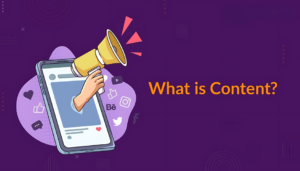
6. SEO Strategies for B2B Lead Generation: Getting Found Online
Search Engine Optimization (SEO) is crucial for attracting organic traffic to your website and generating inbound leads. By optimizing your content and website for relevant keywords, you can improve your search engine rankings and make it easier for potential customers to find you.
Keyword Research for B2B Lead Generation:
- Identify Relevant Keywords: Use tools like Google Keyword Planner, SEMrush, and Ahrefs to find keywords that your target audience is searching for. Focus on long-tail keywords (longer, more specific phrases) that often indicate higher intent.
- Analyze Competitor Keywords: See what keywords your competitors are ranking for.
- Consider Different Keyword Types: Include informational keywords (e.g., “what is B2B marketing”), navigational keywords (e.g., “[your company name] pricing”), and transactional keywords (e.g., “best CRM for small business”).
On-Page SEO Optimization Tips:
- Optimize Title Tags and Meta Descriptions: Make them compelling and include relevant keywords.
- Use Header Tags (H1, H2, H3): Structure your content logically and incorporate keywords naturally.
- Optimize Image Alt Text: Describe your images using relevant keywords.
- Ensure Mobile-Friendliness: A responsive website is crucial for SEO.
- Improve Page Load Speed: Faster loading times improve user experience and SEO rankings.
- Internal Linking: Link relevant pages on your website to improve navigation and SEO.
Link Building and Guest Posting Strategies:
- Earn High-Quality Backlinks: Links from reputable websites signal to search engines that your content is valuable.
- Guest Posting: Write articles for other relevant websites in your industry to gain exposure and backlinks.
- Broken Link Building: Find broken links on other websites and offer your relevant content as a replacement.
Local SEO for B2B Businesses:
If your B2B business serves a specific geographic area, local SEO is essential.
- Optimize Your Googley Business Profile: Ensure your information is accurate and complete.
- Get Local Citations: List your business on relevant online directories.
- Encourage Customer Reviews: Positive reviews can boost your local search rankings.
7. Email Marketing for Lead Generation: Nurturing Relationships at Scale
Email marketing remains a highly effective B2B lead generation tool for nurturing leads and driving conversions.
How to Build an Effective B2B Email List:
- Offer Valuable Lead Magnets: Provide incentives for website visitors to subscribe to your email list.
- Promote Your Email List on Your Website and Social Media: Make it easy for people to sign up.
- Run Contests and Giveaways: Generate interest and attract new subscribers.
- Segment Your List: Categorize subscribers based on their interests, industry, or stage in the buyer’s journey.
Best Email Campaigns for Nurturing Leads:
- Welcome Emails: Introduce your company and provide valuable resources.
- Educational Series: Share informative content related to your industry or solutions.
- Product Updates: Keep subscribers informed about new features or offerings.
- Webinar Invitations: Promote upcoming webinars and virtual events.
- Case Study Highlights: Share success stories to build trust.
Personalization and Automation in B2B Email Marketing:
- Personalize Emails: Address subscribers by name and tailor content to their specific interests.
- Use Marketing Automation: Set up automated email workflows to nurture leads based on their behavior and engagement.
Cold Email Strategies That Actually Work:
- Do Your Research: Understand the recipient’s needs and challenges.
- Personalize Your Message: Avoid generic templates.
- Offer Value: Explain how your product or service can benefit them.
- Keep it Concise: Respect their time.
- Include a Clear Call to Action: Make it easy for them to take the next step.
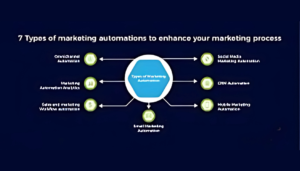
8. Social Media Strategies for B2B Lead Generation: Engaging and Connecting
Social media platforms offer powerful opportunities for B2B lead generation by enabling you to connect with your target audience, build relationships, and share valuable content.
Leveraging LinkedIn for B2B Lead Generation:
- Optimize Your Company Page: Ensure your profile is complete, professional, and highlights your value proposition.
- Share Valuable Content: Post industry insights, blog posts, case studies, and thought leadership articles.
- Engage in Relevant Groups: Participate in industry-specific LinkedIn groups to connect with potential clients and establish yourself as an expert.
- Use LinkedIn Sales Navigator: Leverage advanced search filters to identify and target specific professionals and companies.
- Run Targeted LinkedIn Ads: Reach your ideal audience based on demographics, job titles, industry, and more (covered in Section 9).
How to Use Twitter and Facebook for B2B Leads:
- Share Engaging Content: Post updates, articles, infographics, and videos relevant to your industry.
- Participate in Industry Conversations: Use relevant hashtags to join discussions and connect with potential leads.
- Run Targeted Ads: Both platforms offer robust advertising options to reach specific B2B audiences.
- Monitor Brand Mentions: Engage with users who are talking about your company or industry.
The Role of YouTube and Video Content in Lead Generation:
- Create Educational Videos: Share tutorials, product demos, and industry insights.
- Optimize Your YouTube Channel: Use relevant keywords in titles, descriptions, and tags.
- Include Calls to Action in Your Videos: Encourage viewers to visit your website or download lead magnets.
- Embed Videos on Your Website and Landing Pages: Increase engagement and conversion rates.
Paid Social Media Advertising for Lead Generation:
- LinkedIn Ads: Highly effective for targeting specific B2B professionals and companies. Offer various ad formats like sponsored content, message ads, and lead gen forms.
- Twitter Ads: Target users based on their interests, keywords, and behaviors.
- Facebook Ads: While primarily B2C, Facebook can still be valuable for reaching specific business demographics and interests.

9. PPC (Pay-Per-Click) & Google Ads for B2B Lead Generation: Targeted Traffic and Immediate Visibility
Pay-Per-Click (PPC) advertising, particularly through Google Ads, allows you to reach potential B2B clients actively searching for your products or services.
How to Set Up a High-Converting Google Ads Campaign:
- Conduct Thorough Keyword Research: Identify high-intent keywords related to your offerings.
- Create Compelling Ad Copy: Highlight your unique value proposition and include clear calls to action.
- Optimize Landing Pages: Ensure your landing pages are relevant to your ad copy and designed to convert visitors into leads (covered in Section 13).
- Use Ad Extensions: Add extra information to your ads, such as sitelink extensions, callout extensions, and structured snippets.
- Implement Conversion Tracking: Monitor which keywords and ads are driving the most leads.
The Role of Retargeting in B2B Lead Generation:
- Reach Engaged Visitors: Retargeting allows you to show ads to users who have previously visited your website but haven’t yet converted.
- Nurture Leads: Remind potential clients of your offerings and encourage them to take the next step.
- Segment Your Retargeting Audiences: Tailor your retargeting messages based on the specific pages visitors viewed.
Best Practices for LinkedIn Ads in B2B Lead Gen:
- Leverage Precise Targeting: Utilize LinkedIn’s detailed targeting options to reach your ideal professional audience.
- Use Lead Gen Forms: Capture leads directly within the LinkedIn platform without requiring users to visit your website.
- Test Different Ad Formats: Experiment with sponsored content, message ads, and video ads.
- Focus on Value Proposition: Clearly communicate the benefits of your products or services to a professional audience.
10. Account-Based Marketing (ABM) Strategies: Focusing on High-Value Targets
Account-Based Marketing (ABM) is a strategic approach that focuses your marketing and sales efforts on a select group of high-value target accounts.
What is ABM and Why It’s Effective for B2B Lead Generation?
- Personalized Approach: Tailoring marketing messages and content to the specific needs and challenges of individual target accounts.
- Improved Alignment: Fostering closer collaboration between marketing and sales teams.
- Higher ROI: Focusing resources on accounts with the greatest potential for revenue.
- Stronger Relationships: Building deeper connections with key stakeholders within target organizations.
Steps to Build an ABM Strategy:
- Identify Target Accounts: Select high-value companies that align with your ideal customer profile.
- Understand Your Target Accounts: Research their business goals, challenges, and key decision-makers.
- Create Personalized Content: Develop tailored content that addresses their specific needs.
- Engage Through Multiple Channels: Utilize a variety of channels to reach key stakeholders (e.g., personalized emails, LinkedIn outreach, direct mail).
- Measure and Iterate: Track the progress of your ABM efforts and make adjustments as needed.
Tools and Platforms to Implement ABM:
- ABM Platforms: Terminus, Demandbase, 6sense.
- CRM Integration: Salesforce, HubSpot.
- Personalization Tools: Outreach, Salesloft.
11. Leveraging Webinars and Virtual Events for Lead Generation: Engaging and Educating at Scale
Webinars and virtual events are powerful tools for generating high-quality B2B leads by providing valuable educational content and engaging directly with your target audience.
How to Create a Webinar That Attracts Quality Leads:
- Choose a Relevant and Compelling Topic: Focus on addressing the pain points and interests of your ideal customer.
- Promote Your Webinar Effectively: Utilize email marketing, social media, and your website to reach your target audience.
- Offer Valuable Content: Provide actionable insights and expertise that attendees can benefit from.
- Engage Your Audience: Use polls, Q&A sessions, and interactive elements to keep attendees engaged.
Promoting Your Webinar for Maximum Lead Generation:
- Create a Dedicated Landing Page: Capture registrations and provide all necessary information.
- Send Targeted Email Invitations: Segment your list and personalize your outreach.
- Promote on Social Media: Use relevant hashtags and run targeted ads.
- Partner with Industry Influencers: Expand your reach by collaborating with thought leaders.
Follow-Up Strategies After a Webinar:
- Send Thank You Emails: Include a recording of the webinar and any relevant resources.
- Nurture Attendees: Follow up with personalized emails based on their engagement during the webinar.
- Offer Exclusive Content or Discounts: Encourage attendees to take the next step.

12. Referral and Partnership Strategies: Expanding Your Reach Through Others
Referral and partnership programs can be highly effective and cost-efficient ways to generate B2B leads by leveraging the trust and networks of others.
How to Build a B2B Referral Program:
- Identify Potential Referrers: Focus on satisfied customers, industry contacts, and employees.
- Offer Incentives: Reward referrers for successful lead generation.
- Make it Easy to Refer: Provide clear instructions and tools for making referrals.
- Track and Acknowledge Referrals: Keep referrers informed of the status of their referrals.
Partnering with Industry Influencers for Lead Generation:
- Identify Relevant Influencers: Find thought leaders in your industry with a strong and engaged audience.
- Collaborate on Content: Co-create blog posts, webinars, or social media content.
- Sponsor Influencer Content: Reach their audience through sponsored posts or videos.
Creating a Strong Affiliate Program for B2B Businesses:
- Define Your Affiliate Offering: Determine the commission structure and resources you’ll provide to affiliates.
- Recruit Relevant Affiliates: Partner with businesses or individuals whose audience aligns with yours.
- Provide Affiliate Marketing Materials: Offer banners, links, and content templates.
- Track Affiliate Performance: Monitor clicks, leads, and conversions generated by affiliates.
13. Lead Magnets & Landing Page Optimization: Converting Visitors into Leads
Lead magnets and optimized landing pages are crucial for capturing contact information and converting website visitors into valuable leads.
What are Lead Magnets and How to Use Them?
- Valuable Resources: Offer free content or tools in exchange for contact information (e.g., ebooks, templates, checklists, free trials, consultations).
- Solve a Specific Problem: Address a key pain point of your target audience.
- Easy to Consume: Make them readily accessible and digestible.
- Clearly Defined Value: Communicate the benefits of downloading the lead magnet.
- Promote Them Strategically: Feature them on your website, blog posts, and social media.
Creating High-Converting Landing Pages for Lead Generation:
- Clear and Concise Headline: Immediately communicate the value proposition.
- Compelling Copy: Highlight the benefits of your offer.
- Minimal Distractions: Remove unnecessary navigation and links.
- Strong Call to Action (CTA): Use action-oriented language and make it visually prominent.
- Optimized Forms: Keep forms short and only ask for essential information.
- Mobile-Friendly Design: Ensure your landing pages are responsive and easy to use on all devices.
A/B Testing Strategies to Improve Lead Capture:
- Test Different Headlines: See which resonates best with your audience.
- Experiment with CTA Button Text and Placement: Optimize for clicks.
- Try Different Form Lengths: Find the balance between information gathering and conversion rates.
- Test Different Visual Elements: Evaluate the impact of images and videos.
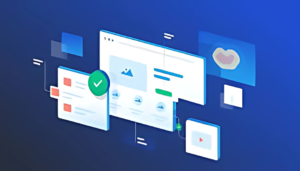
14. CRM and Marketing Automation for Lead Generation: Nurturing and Managing Leads Effectively
Customer Relationship Management (CRM) systems and marketing automation platforms are essential tools for managing leads, nurturing relationships, and streamlining your lead generation processes.
How to Use a CRM for Lead Nurturing:
- Centralized Lead Management: Store and organize all lead information in one place.
- Lead Scoring: Assign points to leads based on their engagement and demographics to prioritize sales efforts.
- Track Lead Interactions: Monitor website activity, email opens, and other interactions.
- Personalized Communication: Use CRM data to tailor your outreach.
Marketing Automation Strategies for B2B Lead Generation:
- Automated Email Workflows: Nurture leads with targeted email sequences based on their behavior.
- Lead Segmentation: Automatically categorize leads based on specific criteria.
- Website Activity Tracking: Monitor which pages leads visit and trigger automated actions.
- Integration with CRM: Seamlessly transfer leads and data between systems.
Best CRM Tools for B2B Businesses:
- HubSpot CRM
- Salesforce Sales Cloud
- Zoho CRM
- Pipedrive
- Microsoft Dynamics 365 Sales
15. Cold Calling and Direct Outreach Strategies: Proactive Engagement
While inbound marketing has gained prominence, cold calling and direct outreach can still be effective B2B lead generation tactics when executed strategically.
How to Craft a Perfect Cold Call Script:
- Research Your Prospect: Understand their company and potential pain points.
- Have a Clear Objective: What do you want to achieve with the call?
- Start with a Strong Opening: Grab their attention and clearly state your purpose.
- Focus on Value: Explain how your product or service can benefit them.
- Ask Open-Ended Questions: Encourage conversation and uncover their needs.
- Handle Objections Professionally: Be prepared to address common concerns.
- End with a Clear Call to Action: Schedule a follow-up meeting or send more information.
The Do’s and Don’ts of Cold Calling in B2B:
- Do: Be polite, professional, and persistent.
- Do: Listen actively to the prospect’s responses.
- Do: Tailor your message to their specific situation.
- Don’t: Read directly from a script.
- Don’t: Be pushy or aggressive.
- Don’t: Waste their time with irrelevant information.
How to Follow Up Effectively After Initial Contact:
- Send a Prompt Follow-Up Email: Reinforce your conversation and provide any promised information.
- Personalize Your Follow-Up: Reference specific points from your initial contact.
- Offer Additional Value: Share relevant resources or insights.
- Be Persistent but Respectful: Follow up multiple times but avoid being overly aggressive.
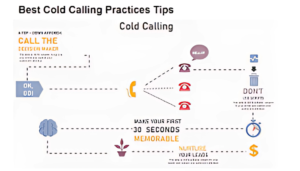
16. Using Data and Analytics to Optimize Lead Generation: Making Data-Driven Decisions
Data and analytics are crucial for understanding the performance of your lead generation efforts and making informed decisions to optimize your strategies.
Tracking Lead Generation Performance with Analytics:
- Website Analytics (Google Analytics): Monitor website traffic, bounce rates, time on page, and conversion rates.
- Marketing Automation Analytics: Track email open rates, click-through rates, and lead nurturing progress.
- CRM Analytics: Analyze lead source, conversion stages, and sales pipeline performance.
- Social Media Analytics: Measure engagement, reach, and website clicks from social media platforms.
- PPC Campaign Analytics: Track impressions, clicks, click-through rates, cost per click, and conversion rates.
How AI and Machine Learning Improve Lead Generation:
- Predictive Lead Scoring: Identify leads with the highest propensity to convert based on historical data.
- Personalized Content Recommendations: Deliver tailored content to leads based on their behavior and preferences.
- Chatbots for Lead Qualification: Automate initial interactions with website visitors and qualify potential leads.
- Improved Ad Targeting: Leverage AI algorithms to identify and target the most relevant audiences for your advertising campaigns.
The Future of Predictive Analytics in B2B Lead Generation:
Predictive analytics will play an increasingly significant role in B2B lead generation by enabling businesses to:
- Anticipate Customer Needs: Proactively identify potential customers who are likely to be interested in their offerings.
- Optimize Lead Generation Spend: Allocate resources to the most effective channels and campaigns.
- Personalize the Buyer Experience: Deliver highly relevant and timely interactions.
17. Challenges and Mistakes to Avoid in B2B Lead Generation: Learning from Experience
Even with the best strategies in place, B2B lead generation can present challenges. Understanding common pitfalls can help you avoid costly mistakes.
Common Pitfalls in Lead Generation Strategies:
- Lack of a Clear Target Audience: Failing to define your ideal customer profile.
- Not Creating Valuable Content: Producing content that doesn’t resonate with your audience.
- Poor Landing Page Optimization: Having landing pages that don’t effectively convert visitors.
- Ignoring Lead Nurturing: Failing to build relationships with leads over time.
- Not Tracking and Analyzing Results: Making decisions based on guesswork rather than data.
- Sales and Marketing Misalignment: Lack of collaboration between sales and marketing teams.
How to Identify and Fix Low Conversion Rates:
- Analyze Your Funnel: Identify drop-off points in your lead generation process.
- Review Your Messaging: Ensure your value proposition is clear and compelling.
- Optimize Your Calls to Action: Make them clear, concise, and action-oriented.
- Test Different Approaches: Use A/B testing to identify what works best.
- Gather Feedback: Ask for input from your sales team and potential customers.
Why Lead Quality is More Important Than Lead Quantity:
Focusing solely on generating a large volume of leads without considering their quality can be inefficient and costly. High-quality leads are more likely to convert into paying customers, resulting in a better return on investment. Prioritize attracting leads that align with your ideal customer profile and have a genuine interest in your offerings.
18. Case Studies and Success Stories: Learning from the Best
Examining successful B2B lead generation campaigns and learning from industry leaders can provide valuable insights and inspiration.
Examples of Successful B2B Lead Generation Campaigns:
- Content Marketing Success: Companies using in-depth blog posts and whitepapers to attract and educate their target audience.
- ABM Excellence: Organizations implementing personalized ABM strategies to win high-value accounts.
- Webinar Mastery: Businesses leveraging engaging webinars to generate qualified leads and establish thought leadership.
- LinkedIn Lead Generation: Companies effectively using LinkedIn’s targeting capabilities for advertising and outreach.
Lessons from Industry Leaders on Lead Generation:
- Focus on Providing Value: Offer genuine insights and solutions to your audience.
- Build Strong Relationships: Nurture leads and build trust over time.
- Embrace a Multi-Channel Approach: Reach your audience through various touchpoints.
- Continuously Test and Optimize: Regularly analyze your results and make data-driven improvements.
- Align Sales and Marketing: Foster collaboration between your revenue-generating teams.
19. Future Trends in B2B Lead Generation: Staying Ahead of the Curve
The landscape of B2B lead generation is constantly evolving. Staying informed about emerging trends is crucial for maintaining a competitive edge.
How AI and Automation are Changing B2B Lead Generation:
- Hyper-Personalization: AI will enable even more granular personalization of content and outreach.
- Intelligent Automation: Automating complex lead nurturing workflows and sales processes.
- Predictive Insights: AI-powered analytics will provide deeper insights into lead behavior and intent.
The Rise of Conversational Marketing & Chatbots:
- Real-Time Engagement: Chatbots provide instant responses to website visitors and qualify leads.
- Personalized Interactions: AI-powered chatbots can understand user intent and provide tailored information.
- Seamless Handoff to Sales: Qualified leads can be seamlessly transferred to human sales representatives.
The Role of Blockchain in Lead Generation:
- Enhanced Data Security and Privacy: Blockchain can provide a more secure and transparent way to manage lead data.
- Improved Lead Verification: Ensuring the authenticity and quality of leads.
- Decentralized Lead Generation Platforms: Potential for new platforms that connect businesses directly with potential customers.
20. Conclusion & Next Steps: Implementing Your Winning Strategy
Mastering B2B lead generation is an ongoing process that requires a strategic, multi-faceted approach. By understanding the fundamentals, leveraging the right strategies, and continuously adapting to evolving trends, you can build a consistent pipeline of high-quality leads that fuel sustainable growth for your business.
Recap of Key B2B Lead Generation Strategies:
-
Inbound Marketing (Content, SEO, Social Media)
-
Outbound Marketing (Cold Outreach, Paid Advertising)
-
Account-Based Marketing (ABM)
-
Webinars and Virtual Events
-
Referral and Partnership Programs
-
Lead Magnets and Landing Page Optimization
-
CRM and Marketing Automation
-
Data and Analytics
How to Implement These Strategies in Your Business:
- Define Your Ideal Customer Profile (ICP): Understand who you are trying to reach.
- Set Clear Goals and KPIs: Determine what you want to achieve and how you will measure success.
- Develop a Multi-Channel Strategy: Choose the tactics that best align with your ICP and goals.
- Create High-Quality Content: Provide value to attract and engage your audience.
- Optimize Your Website and Landing Pages: Make it easy for visitors to convert into leads.
- Implement Lead Nurturing Processes: Build relationships with leads over time.
- Leverage CRM and Marketing Automation: Streamline your lead management and nurturing efforts.
- Track Your Results and Make Data-Driven Decisions: Continuously optimize your strategies.
- Foster Collaboration Between Sales and Marketing: Ensure alignment for maximum effectiveness.
- Stay Updated on the Latest Trends: Adapt your strategies to the evolving B2B landscape.
By taking these steps and continuously learning and adapting, you can build a powerful B2B lead generation engine that drives significant growth and success for your organization.









Pingback: What is the suggested first step for entering software development-Hurray! Best Guide of 2025